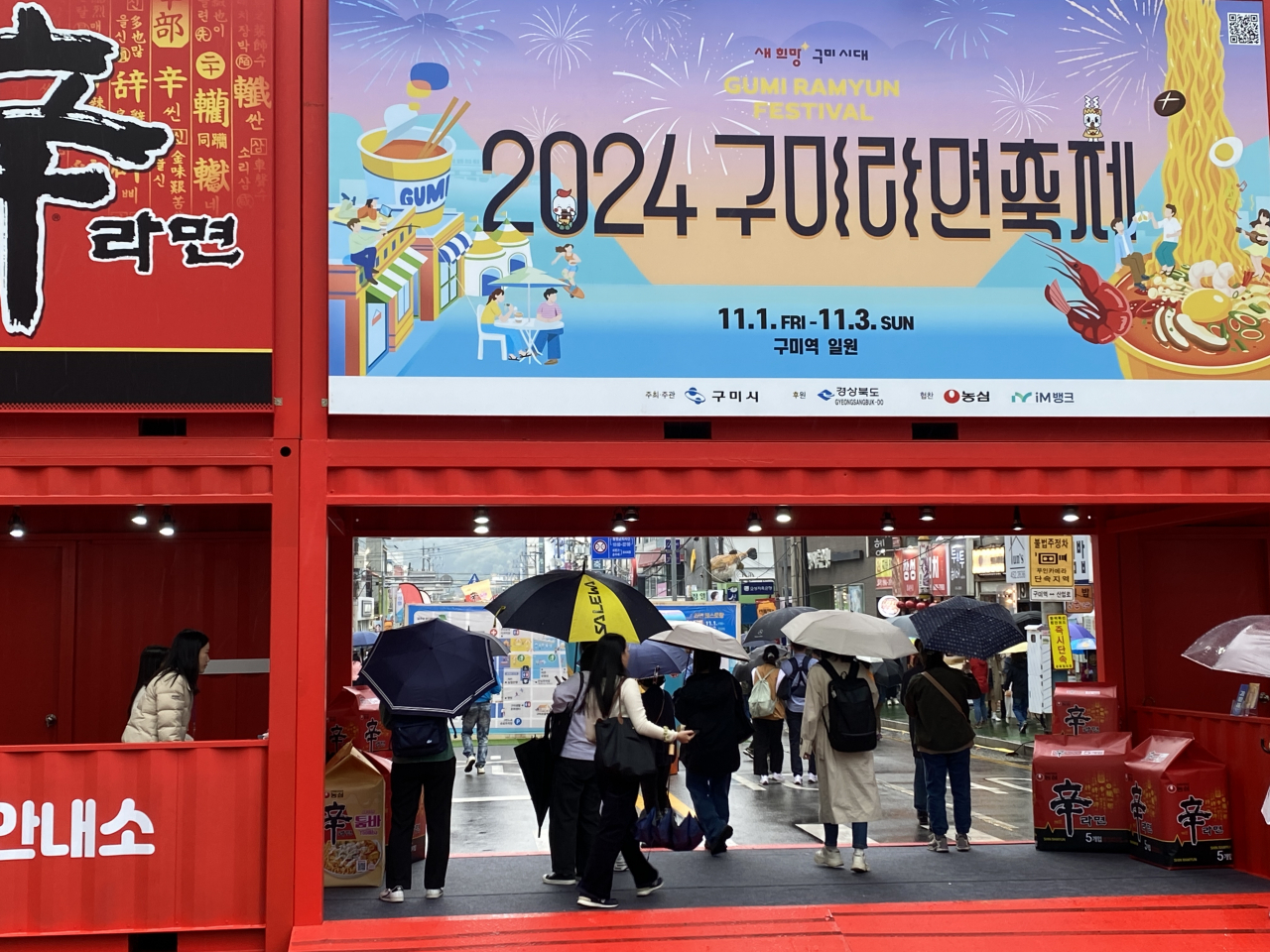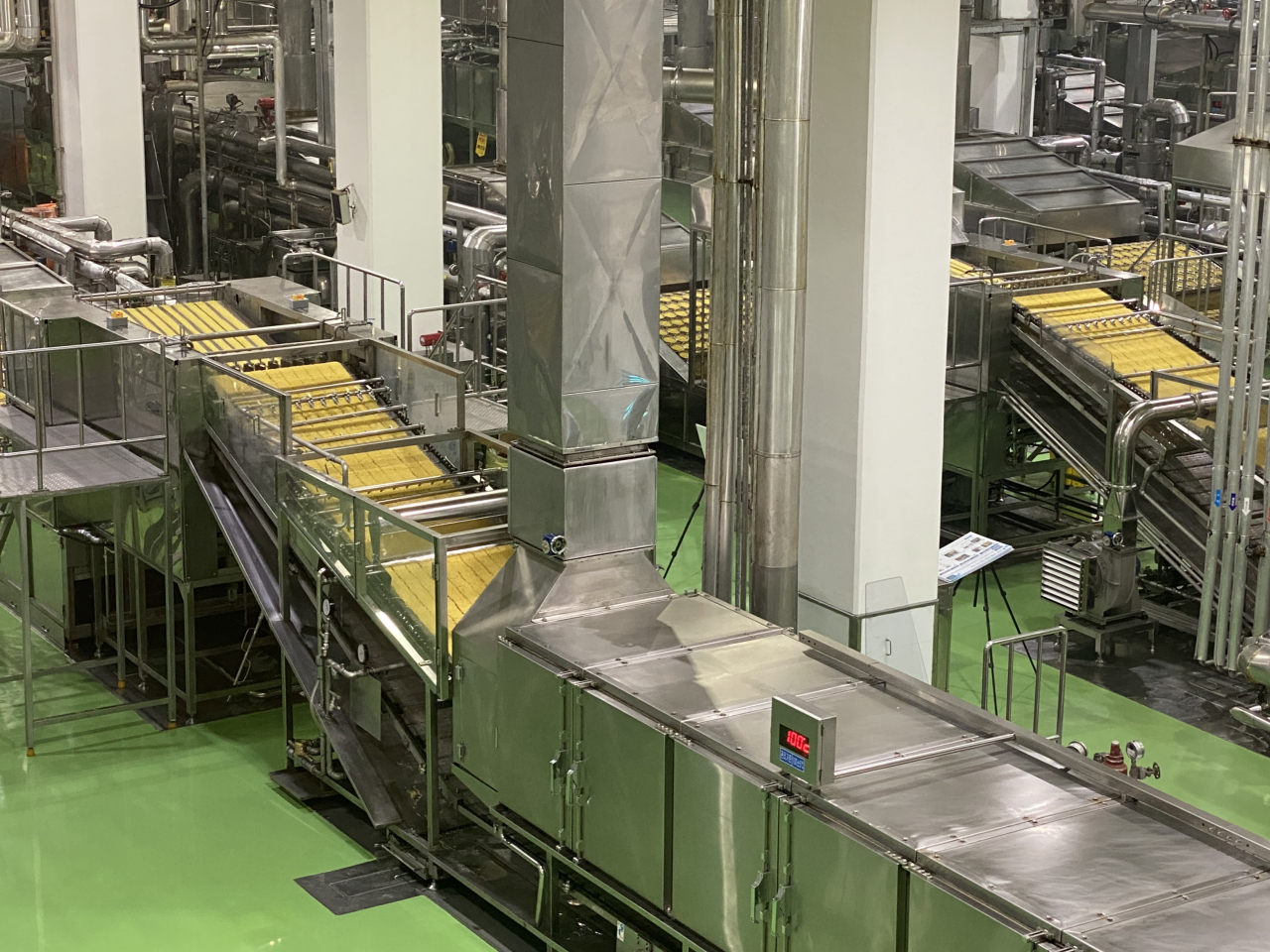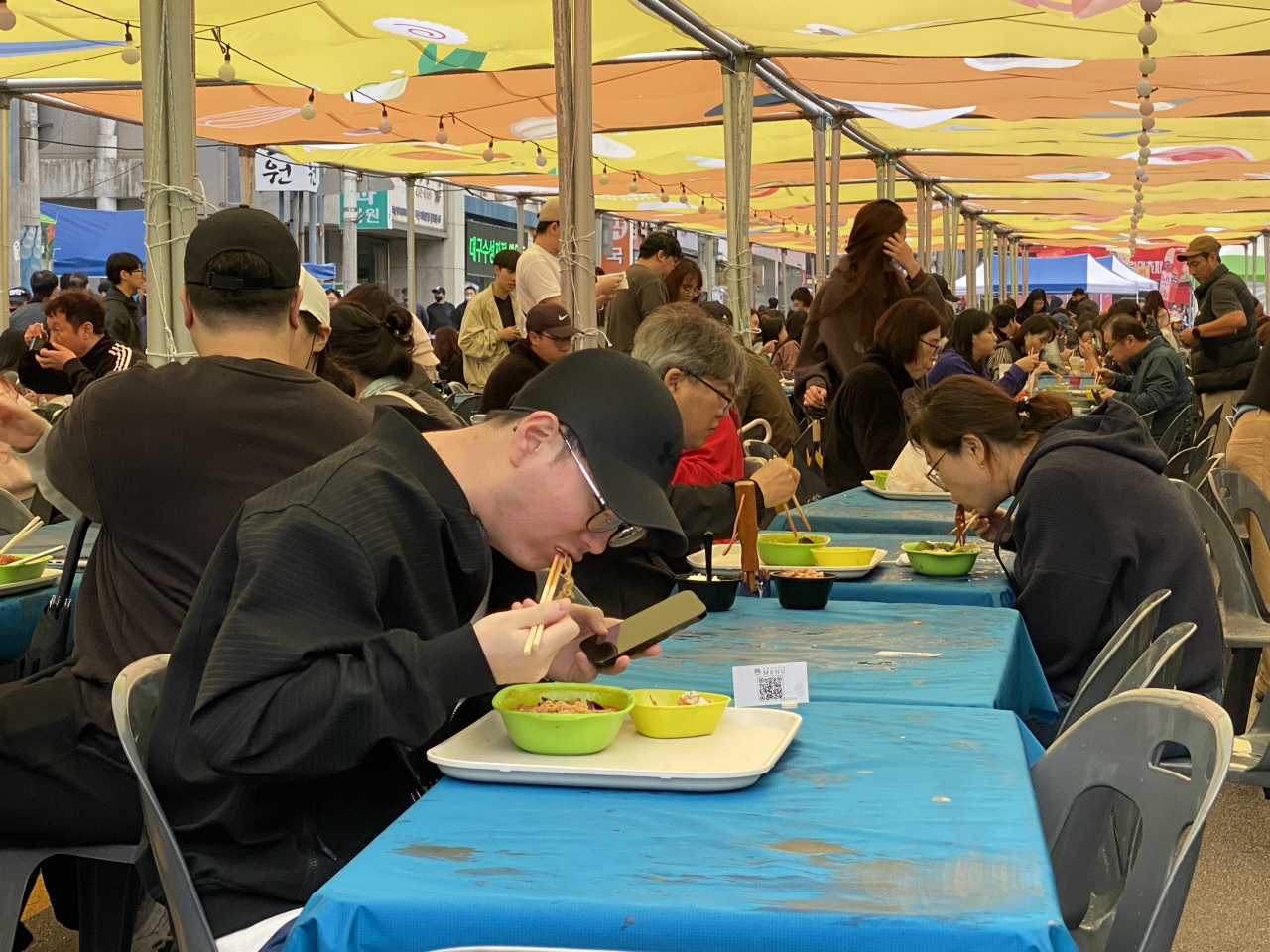 |
Visitors pass through the two-story red container gate adorned with promotional posters for the Gumi Ramyun Festival and Nongshim's flagship product, Shin Ramyun, in Gumi, North Gyeongsang Province, Friday. (Hwang Joo-young/The Korea Herald) |
GUMI, North Gyeongsang Province -- In front of the modest Gumi Station building on Friday, the streets bustled with crowds enjoying ramyeon, despite the rainy weather.
Claiming to be "the longest ramyeon restaurant in the world," the 475-meter long strip occupied by the event zone featured 24 booths offering an array of ramyeon-based dishes prepared by chefs from local establishments, including snack bars, bistros, and food trucks.
In a seating area accommodating up to 960 people, visitors enjoyed ramyeon creations from seafood ramyeon to ramyeon sandwiches, tacos, and fried rice.
Front and center in the zone, a striking red two-story container adorned with images of products from Nongshim, South Korea's largest ramyeon maker.
A special booth run by Nongshim also allowed visitors to create their own custom ramyeon packs by selecting their favorite toppings.
Gumi has hosted this annual event in partnership with Nongshim since 2022, as part of its efforts to revitalize the local economy, aiming to position the city as a symbol of food and business tourism in the country.
Gumi Mayor Kim Jang-ho emphasized that for Gumi, ramyeon isn’t just a meal; it’s a symbol of the city’s industrial heritage. “Gumi once thrived as a manufacturing city. We’re proud of its contributions to South Korea’s industrialization during that period, and ramyeon has been a cherished part of that legacy,” Kim said at a press conference held at a local community center earlier in the day.
 |
Steamed noodles are conveyed to machines where they are cut and shaped at the Nongshim Gumi plant. (Hwang Joo-young/The Korea Herald) |
Gumi’s partnership with Nongshim is deeply intertwined with the company’s plant in the city.
The Nongshim Gumi factory, which opened in 1990, is the largest of the company’s domestic facilities, spanning over 62,000 square meters. Out of the total 16 production lines, the six high-speed lines can produce 3.6 million ramyeon packets per day.
All new technologies for Nongshim products, including artificial intelligence-based sanitation and quality checks, are implemented at this plant before being expanded to other facilities, both in Korea and abroad. The company operates six factories at home and another six in the US and China.
Economically, the factory also plays a vital role in Gumi, contributing around 450 billion won ($326 million) annually to the local economy and generating products valued at 770 billion won each year. It employs a total of 645 local residents, with cumulative employment of more than 6,500 workers over the past 25 years.
Both Nongshim and the Gumi government aim to elevate Gumi’s global standing as a "ramyeon city" through this festival. "When foreign tourists come to Korea for Korean cuisine, we want them to visit Gumi, which we envision as a future leader in the K-food industry," said Yun Seong-jin, the event’s director.
To promote international appeal, the city government invites sister cities from abroad to participate in the event each year. This year, four Asian countries -- Vietnam, Japan, Taiwan, and Indonesia -- set up booths showcasing their regional noodle dishes made with ramyeon. The city also invited popular foreign social media influencers to help promote the festival.
"Committed to invigorating Gumi, Nongshim will continue to actively support the event," a Nongshim official said. "We believe it will contribute to the revitalization of the local economy, especially as ramyeon has recently gained global popularity as a representative K-food." The official added that of the 3,550 visitors to the Gumi factory from January to September this year, 494 people, or 14 percent, were foreign nationals.
South Korea's annual ramyeon exports exceeded $1 billion for the first time this year, with two months left, marking a 30 percent increase compared to the same period last year, according to government data.
 |
Visitors at the Gumi Ramyun Festival enjoy dishes under a canopy. (Hwang Joo-young/The Korea Herald) |







